QUITO, ECUADOR — Diego Benalcazar has worked all over Latin America — from Chile and Peru to Venezuela, Colombia and Mexico — but since mid-2013, the geologist has concentrated on finding projects in Ecuador as Odin Mining and Exploration’s (TSXV: ODN) vice-president of exploration and corporate development.
“Ecuador is the place to be,” he says over lunch at the Marriott Hotel in Quito, where he is attending a government-sponsored investment forum. “Four or five years ago Colombia was, but it got saturated so fast once AngloGold let go of a good part of its concessions. Colombia started changing legislation, and all the juniors came in.”
By the time Benalcazar arrived in Colombia to look for projects in 2011 and 2012, he says, “there was nothing. The good stuff was taken.”
Benalcazar says Ecuador enjoys many of the same geological attributes as Colombia, without the security issues related to the country’s history of guerrillas and drug wars.
“When the juniors went to Colombia, they had to be friends with the military in order to have assistance,” he says. “In Ecuador we only need to tweak a couple of things in the mining law and the fiscal treatment of the mining sector for this country to be full of mining companies, and I think that time is coming. I can sense it.”
The mining executive — and former president of the Board of Directors of the Ecuadorian Chamber of Mines — is also convinced that the small Andean nation is on the verge of “incredible change” over the next two years, because the country’s leaders are hungry for foreign investment.
“The government realizes that it needs a change in attitude,” he explains. “They’re going to have to pay a lot of attention to public expenditure. The cost of oil production here is almost the same as the current price of crude, and this is likely to continue over the next couple of years, so they have to pay attention to other sources of income.”
Quito officials are fully aware of this, and of the promising geology the country has to offer, he adds.
“The continuity of these Andean mineralized belts is so rich — what the country needs is more exploration,” Benalcazar says, pointing out that the seven major discoveries that were treated as “strategic projects” after the 2008 moratorium on exploration and mining lifted came from exploration in the 1990s and early 2000s. “Imagine if Ecuador had continued exploration for another decade,” he muses. “We’d have seven or 10 more projects.”
Benalcazar forecasts that over the next five to eight years, Ecuador could have as many as 15 large-scale projects at over 1,000 tonnes per day, in what he describes as the country’s “first generation” of mines.
The next stage, or “second generation,” he speculates, would include medium mines of between 200,000 and 500,000 oz. gold. “You’ll find multiple deposits within a small area that could be easily combined for a 2 million to 3 million oz. project, or a stand-alone 500,000 oz. deposit. We haven’t seen that yet.”
Among Ecuador’s many attributes, he says, are abundant water; cheap electricity from the country’s six hydroelectric projects, expected on-stream in 2016; and inexpensive labour. Because Ecuador is one-quarter the size of Peru, most mining projects are also relatively easy to reach from major population centres.
“You can be in and out within a day,” he says. “In Peru and Chile it can take forever to get to some of these projects — a couple of days in some cases.
For companies with cash-on-hand in the current downturn, Ecuador is more attractive than some Latin American countries like Chile, he argues, where you can buy the same quality of project as you’d find in Ecuador, but “you’ll pay many times more.”
Benalcazar isn’t naive about the challenges of developing Ecuador’s mining industry, and is the first to admit that foreign investors have been patient over the last decade, as the government’s policy on mining evolves.
“It’s only been in the past two or two and a half years that they realized mining could become a source of income, without really knowing that it takes eight to 10 years to develop a mine,” he says. “They thought by signing contracts and bringing in companies they’d have mining production in two years. With that initial level of understanding, you can imagine they were totally lost about how the industry works.”
The government is also aware that Kinross Gold’s (TSX: K; NYSE: KGC) decision in 2013 to abandon Ecuador and its Fruta del Norte project over concerns about high tax rates at the time meant that the country “missed the upside of commodity prices and strong markets,” and “harmed Ecuador’s reputation, turning it into a “no-go destination.”
Lundin Gold’s (TSX: LUG) acquisition of Fruta del Norte in December 2014 gives Ecuador another chance, and the mining company and the government are close to making a fiscal stability agreement. “There is an opportunity for Lundin Gold, as the government of Ecuador can’t fail a second time,” Benalcazar notes.
Other things have changed, too, making the country an easier place to do business, he argues, such as simplified and faster permitting processes. In the past, companies would wait two years for an environmental license. Now, if an institution doesn’t respond within a certain number of days, the answer is usually positive. There are “clear rules of the game” and provincial institutions that help companies solve problems, and engage with local communities.
“Some people will regret that they’re not here now, because if they come later, they’ll either need early stage exploration, or pay two or three times more,” he says. “For companies that are waiting to see if there are going to be any more, or drastic, changes in the law — that’s not going to happen fast. It is what it is, and they’re not going to do anything to the mining law this year. Soon enough the adverse conditions of declining economic growth will demand more flexibility to the fiscal regime — forcing Ecuador to become a competitive destination for risk investment, and the development of mines.”

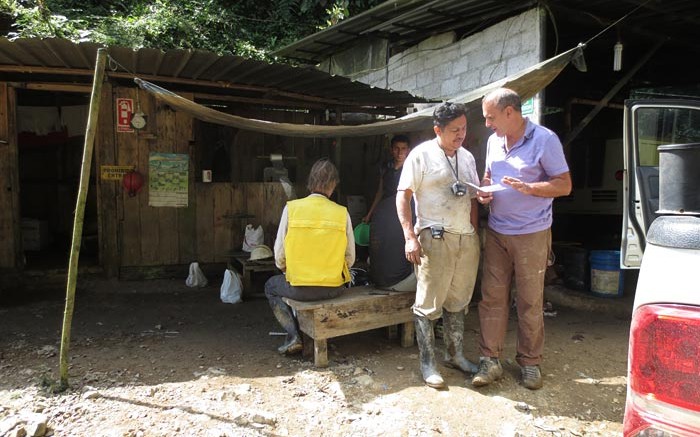
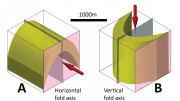
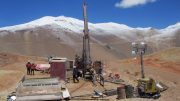
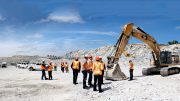
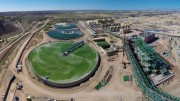
Be the first to comment on "‘Ecuador is the place to be,’ Odin geologist says"